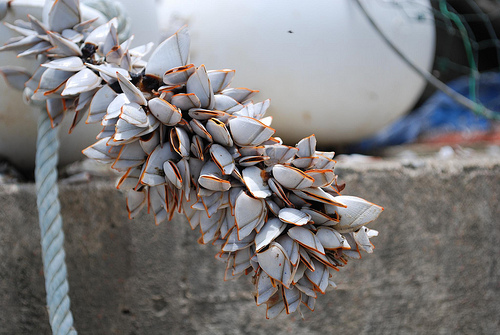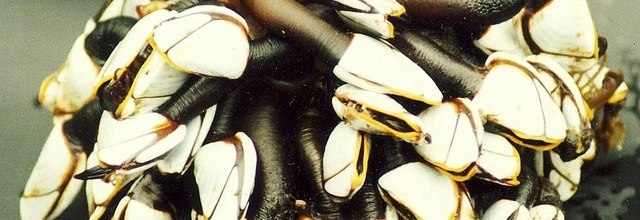Nutrition/Growth
When it comes to nutrition
and growth, there is not much to barnacles. P. polymerus
is a filter feeder, like most barnacles. Some barnacles are
parasites that take the blood of others, but those barnacles don't
have a shell or other parts like cirri for feeding. P.polymerus
uses cirri, which are the tentacle 'feather'
like structures that come out of the shell and grab small foods like
plankton, bacteria, larvae, and other small type of crustacean.
After the cirri capture their prey, the cirri retract into the shell
where the food is then dropped off at the mouth for digestion.
P. polymerus acquires its food by settling where there is a
strong current. The reason for this is so that all ti ny
particles of food are being brushed over the extended cirri of the
barnacle and are trapped and eaten.
ny
particles of food are being brushed over the extended cirri of the
barnacle and are trapped and eaten.
It doesn't take very long for the goose barnacle to grow. After fertilization, the barnacle is hatched from the egg it has grown in and starts to mature from there. Most barnacles tend to be as small as an eighth of an inch, but are more commonly about a half of an inch in diameter.
Most of the growth occurs in the stalk part of the barnacle and in the shell plates. The more growth of the shell for the barnacle, the better the protection it has against its prey. When growing, the color of the stalk of the barnacle can change based on the different color of food it intakes. So if P. polymerus eats a red plankton, the color of the stalk will be red.
Click here to continue to Reproduction
